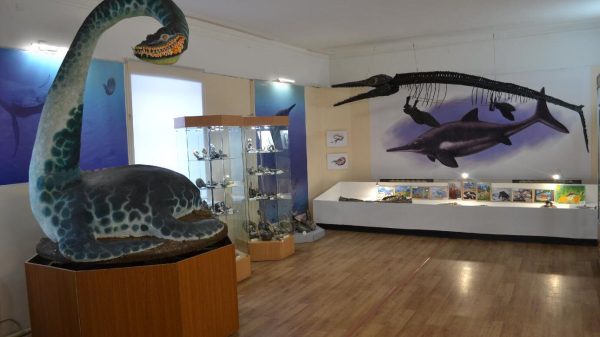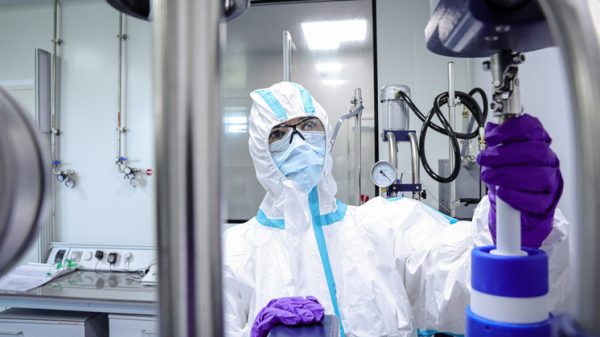Plastic particles found to be ubiquitous: historians sound the alarm
Experts warn microplastics could erase part of human history, with the chemicals even found in Roman and Viking graves. Scientists decided to find out whether microplastics can be found at archaeological sites. The team analyzed six soil samples, finding more than 25,000 microplastic particles.

Microplastics are reaching almost every corner of the globe, but now tiny particles threaten to wipe out part of human history , writes the Daily Mail.
Researchers from the University of York in the UK have found the first evidence of microplastics at two archaeological sites in York, which led to significant finds from the Roman and Viking periods.
Microplastic particles less than five millimeters long enter our bodies through plastic packaging, some foods, tap water and even the air we breathe, and have been linked to cancer and fertility problems.
But foreign objects pulled from the ground in the UK, could potentially compromise the preserved remains, making them useless to science, notes the Daily Mail.
The team found more than 25,000 microplastic particles in the samples, which were likely the direct result of human activities such as industry, agriculture, transportation and everyday life.
Microplastics have recently received a lot of attention due to their prevalence and abundance in our daily lives. They have also been found in almost every corner of the world — from the deepest place on the planet, the Mariana Trench, to the top of Mount Everest.
Professor John Schofield, from the Department of Archeology at the University of York, said in a statement: “This seems to be an important point in confirming what we should have expected: that what was previously thought to be pristine archaeological deposits suitable for research are in fact contaminated with plastic, and that this includes sediments sampled and preserved in the late 1980s. We are familiar with plastic in oceans and rivers. But here we see that our historical heritage contains toxic elements. The extent to which this contamination jeopardizes the evidentiary value of these deposits and their national significance is something we will attempt to explore further.»
The team analyzed soil samples taken from Wellington Row in 1989 and from the Queen Hotel' s in York the same year and in 1990 — a total of three samples from each. The earliest deposits from Wellington Row were discovered in the late first or early second century and date from the 19th and 20th centuries.
And those found at the Queen's Hotel date from the late the first — the beginning of the 20th century.
The highest concentration was in Wellington — 20,588 microplastics per kilogram, and samples from the Queen's Hotel site contained 5,910 microplastics per kilogram.
Archaeologists found about a tonne of bones at the site dating back to the Viking period animals, a quarter of a million pottery and 20,000 other interesting objects.
Excavations at the Roman site of the Queen's Hotel have revealed the remains of an ancient wall, suggesting that the area may have been of great importance to ancient times. empire.
The team used a technique called Fourier transform infrared spectroscopy (FTRI), which can identify unknown plastics in materials. The device found tens of thousands of microplastics in six small soil samples — and 16 of them could not be classified.
Plastics that may be included are ethylene vinyl and polyalkene, which are used in food packaging. Polyethylene, which is used in water bottles, polypropylene, used in cans, and hydrocarbon resin, which is added to rubbers, printing inks and adhesives, are other plastics also found. However, 57 percent of the microplastics found were classified as polytetrafluoroethylene (PTFE) — or what is commonly known as Teflon, which is used in non-stick cookware.
The team theorized that the tiny particles were brought into the archaeological sites when they were excavated in the 1980s. «Plastic storage buckets, core (polymethacrylate) tubes, and a week-long air sample taken from the archival storage facility revealed different predominant polymer types compared to those found in the archival sediments,» the researchers write.
The team said the work was a pilot study to see if microplastics had penetrated valuable objects, and noted that «if replicated across the UK, many cultural heritage sites would potentially be at risk due to increased wear and loss of information potential.»
Because plastics degrade slowly, the particles can affect the chemical and physical composition of the soil. «The potential of radiocarbon dating or residue/trace element analysis may be compromised by the presence of [microplastics] and again requires further study to determine whether these are real risks,» the published study said.

























































Свежие комментарии